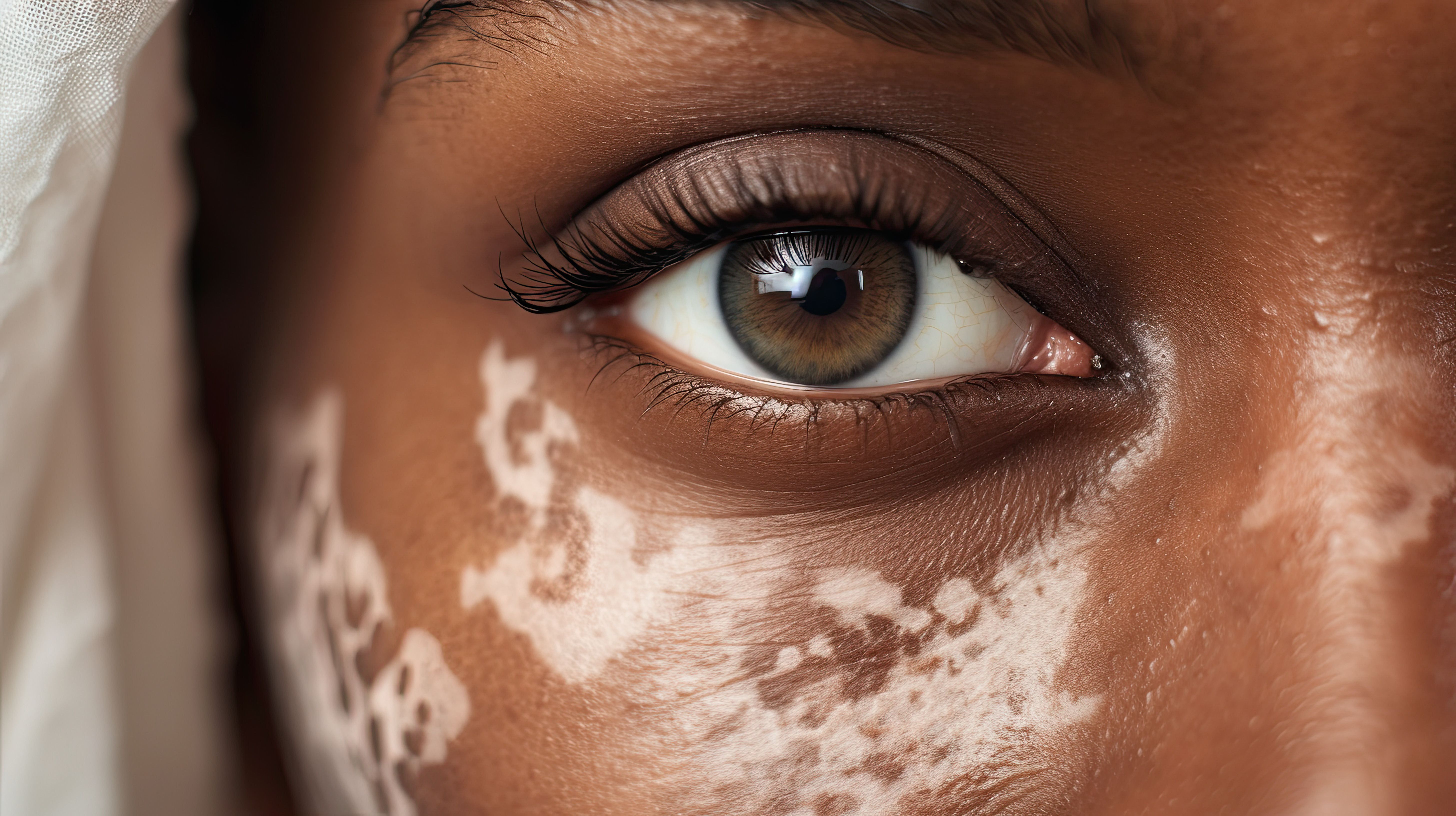- Acne
- Actinic Keratosis
- Aesthetics
- Alopecia
- Atopic Dermatitis
- Buy-and-Bill
- COVID-19
- Case-Based Roundtable
- Chronic Hand Eczema
- Chronic Spontaneous Urticaria
- Drug Watch
- Eczema
- General Dermatology
- Hidradenitis Suppurativa
- Melasma
- NP and PA
- Pediatric Dermatology
- Pigmentary Disorders
- Practice Management
- Precision Medicine and Biologics
- Prurigo Nodularis
- Psoriasis
- Psoriatic Arthritis
- Rare Disease
- Rosacea
- Skin Cancer
- Vitiligo
- Wound Care
News
Article
Vitiligo and Retinal Detachment: Is There a Connection?
Author(s):
reddish/AdobeStock

The risk of retinal detachment in people with vitiligo is 44% higher than among people without the disease, according to a new study conducted in Taiwan.1 Those who have undergone phototherapy or systemic therapy for vitiligo face an even higher risk.
The findings are based on a population-based cohort study using 2007-2018 data from the Taiwan National Health Insurance Database.
For the study, a total of 21,132 patients with vitiligo were 1:4 matched with patients without vitiligo by age, sex, and propensity score of comorbidities including hypertension, diabetes mellitus, dyslipidemia, atopic dermatitis, glaucoma, myopia, uveitis, eye injury, and previous cataract surgery.
Examining this data, the researchers found the cohort of patients with vitiligo had a significantly higher rate of retinal detachment than the patients without vitiligo (adjusted HR 1.44; 95% CI 1.20–1.72; P<0.001). Patients with vitiligo who required treatments such as phototherapy, systemic corticosteroids, or immunosuppressants exhibited an even greater risk (adjusted HR 1.57; 95% CI 1.16–2.14; P 0.004). The risk remained high over a 10-year period, the researchers found.
The researchers noted that vitiligo is associated with many “extracutaneous abnormalities” including “thyroid disease, alopecia, hearing loss, and inflammatory bowel disease.”
Although vitiligo “is reportedly associated with several abnormalities in the choroidal and retinal structures, such as thinner subfoveal choroidal thickness, hypopigmentation of retinal pigmentepithelium, and chorioretinal degeneration,” the research team noted, the significance of these findings relating to risk to patients was previously undetermined.
Awareness of the association between vitiligo and retinal detachment is important, corresponding author Chen-Yi Wu told Dermatology Times. Among patients with vitiligo, “early referrals to an ophthalmologist should be considered, particularly in cases where other risk factors are present,” he said.
A previous study observed a link between vitiligo and dry eye disease and pigmentary abnormalities of various ocular structures, especially the retinal pigment epithelium.2 This study also found that normal-tension glaucoma may be more prevalent in patients with vitiligo and noted that periocular depigmentation seemed to be connected to ocular abnormalities.
“There is some level of evidence—though far from definitive—indicating that those with periocular depigmentation are at greater risk of certain structural ocular abnormalities than the vitiligo population in general,” the study authors wrote.
References
- Ching-Li Chen, Chun-Ying Wu, Yen-Ling Chen, Chih-Chiang Chen, Yun-Ting Chang, Chen-Yi Wu. Association between vitiligo and risk of retinal detachment: A population-based cohort study in Taiwan. Clinical and Experimental Dermatology. 2024;llae035, https://doi.org/10.1093/ced/llae035
- LeWitt T, Tauscher R, Obiofuma G, Peterson J, Haddadin R, Kundu RV. Ocular manifestations of vitiligo: a systematic review. BMC Ophthalmol. 2023 Mar 27;23(1):120. doi:10.1186/s12886-023-02777-9. PMID: 36973683; PMCID: PMC10041747.
Newsletter
Like what you’re reading? Subscribe to Dermatology Times for weekly updates on therapies, innovations, and real-world practice tips.











